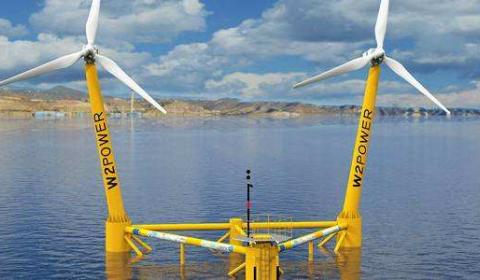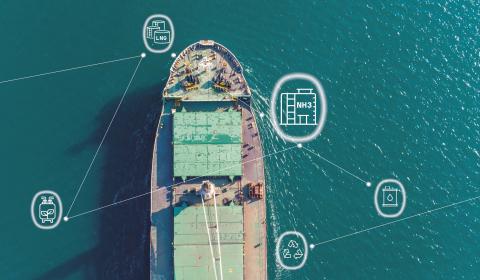
The twin turbines making offshore wind power competitive
EnerOcean’s floating wind solution, W2Power, is solving a longstanding challenge for offshore renewables: how to optimize energy output while minimizing construction, installation and maintenance costs.
Floating wind turbines have long been the offshore wind industry’s white whale. While fixed wind farms have so far dominated the industry due to their durability and cost-effectiveness, floating wind is undoubtedly the more flexible solution, offering numerous advantages.
Placed far offshore, floating turbines benefit from strong, regular winds. They make little impact on the marine environment and can be easily removed or relocated. Above all, their placement in deep water is optimal for the majority of countries that do not border shallow water, enabling the delivery of renewable offshore energy.
However, a major roadblock has kept floating wind turbines from dotting the world’s seas: cost.
Today’s large floating wind farms – which can measure over 200 meters in diameter and produce 10-12 megawatts (MW) – are expensive to build, install, operate and maintain. And building bigger is not an option: taller, heavier turbines put disproportionately higher loads on floating foundations, incurring greater construction and maintenance costs.
Twice the turbines, half the price
EnerOcean’s W2Power free-floating, triangular platform maximizes wind exposure, thanks to specialized weathervane technology that ensures its two angled 6 MW turbines always face its energy source. The unit’s shallow draft design is much lighter than floaters made for 12MW turbines, allowing W2Power to easily enter and leave port, or be towed to new locations.
The result is one of the most cost-effective solutions for offshore floating wind under development today. W2Power’s compact design offers the lowest possible cost per MW of power at sea, while providing an equivalent level of power generation. The unit’s unique weathervaning technology ensures maximum productivity, while its lighter weight helps limit construction costs and facilitate maintenance.
Sailing through sea trials
In 2019, a scale prototype of the W2Power unit was moored alongside the Canary Islands in Spain. The model – 1/6 the size of a full unit – was placed out to sea for four months, where it weathered seven storms without any operational disruptions. This is a particular triumph for a floating wind device, as increasing numbers of severe storms must be overcome.
Following proof of concept, EnerOcean is now developing a full-scale array to kick off the commercial phase. This puts W2Power at the forefront of the expected wave of floating wind projects, as governments across Europe dramatically increase spending on offshore renewables.
From fresh ideas to fresh fish
Generating energy from offshore wind is only the beginning for W2Power. The innovative, adaptable platform design lends itself to numerous future possibilities, including the addition of energy storage facilities, tidal energy devices and aquaculture farms.
Moving forward, EnerOcean is looking to develop these more intricate units and make the most of their floating offshore platforms. Continued collaboration with Bureau Veritas Marine & Offshore for approval in principle (AiP) and prototype certification will be key to that effort.
Together, EnerOcean and Bureau Veritas can wed innovative design, technical expertise and regulatory compliance to build the next generation of offshore floating wind farms.










